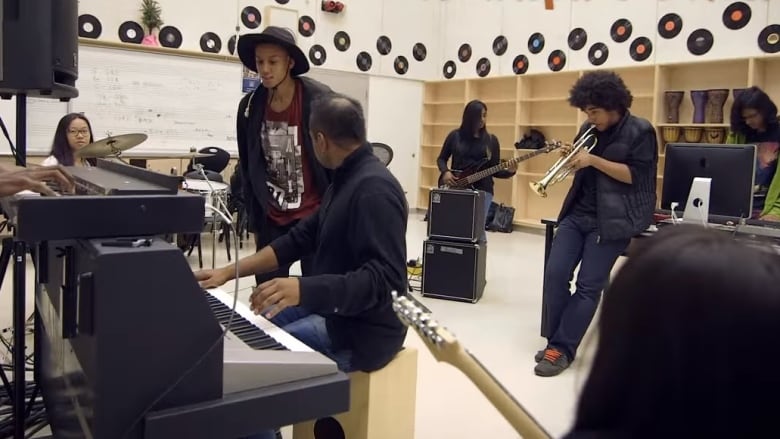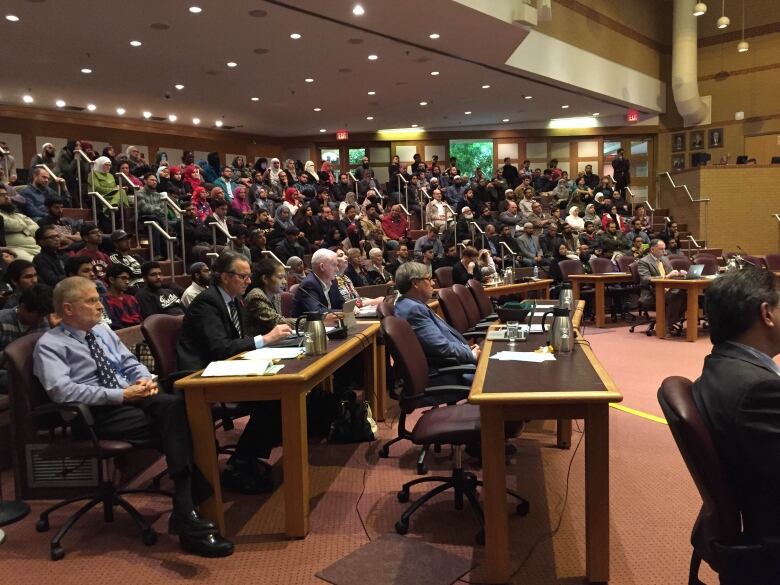Black students need advocates inside the classroom
Mothers are still often the ones tasked to protect their kids inside their schools, from the outside

On my first day of Grade One in Scarborough, Ont., my teacher asked what language I spoke at home. I'd never had that question before, so I thought of my neighbour from China who spoke "Chinese," and told the teacher I spoke "Jamaican." She then escorted me down the hallway to an ESL classroom.
When my mother found out what happened, she demanded to know why a child whose first language was English had been put into ESL. Both the teacher and the principal stumbled over their words, searching for answers. That was my first and last day of ESL.
Twenty-five years later, black mothers continue to lead the way in shielding black children from discrimination in education. While boards across the country endeavour to root out the unfair treatment that many students of colour particularly black boys face in the classroom, mothers are still often the ones tasked to protect their kids inside their schools, from the outside.
'Personal space'
Back in October, Colene Edwards of Brampton, Ont. went to the media after she found out her six-year-old son, Anelka, had been forced by his teacher to stand inside of small pie-shaped "box" that had been taped onto the classroom floor. Edwards said that according to the teacher, this "disciplinary measure" was intended to teach Anelka, who was the only black student in the class, about "personal space."
After conducting an investigation, the Peel Region School Board released a statement concluding that confining kids to taped out boxes "would not be a strategy the board would recommend" in terms of teaching students about personal space. The board's communication director also added that three other students had been subjected to the same treatment as Anelka. No further information has been provided about those other students.
The board's response failed to acknowledge the seriousness of the matter as well as the long history of anti-black educational discrimination in Canada which informed this situation. Edwards' story is just one experience among many about unfair treatment being shared publicly by black mothers. Indeed, the Peel board recently published a report confirming the claims that many of these mothers have been making for years: that black students face harsher discipline, lower expectations and profiling from teachers and administrators.
Action Plan
Along with its report, the board issued an action plan that includes a pledge to "identify, understand, minimize and eliminate the marginalization experienced by black males in Peel schools." That plan will see to compulsory anti-racism training for teachers, new mentoring programs for students and the inclusion of black history in high school curriculums.
While this is a positive step in terms of improving the experiences of black students in classrooms, the difficulty in addressing inequality in schools is that most programs are designed to tackle the most explicit and egregious acts of racism not the subtle biases that lead black children to be placed in ESL classrooms, for example, or pie-shaped boxes on the floor.
Schools do not exist in a vacuum. In her 2013 study of urban schools in Toronto, called "Reframing Classroom Encounters," Melanie Willson observes that "predominantly white teachers, who have little to no contact with poor and racialized communities outside the classroom space, fill this 'gulf in experience' with easily accessible stereotypes of urban students as deficient, needy, or dangerous." Consequently, many marginalized youth face the same oppressive stereotypes within the school as those confronting them beyond its walls. The imposition of institutional, cultural, and interpersonal discrimination on young people at a time when they are developing an understanding of the world cultivates alienation, insecurity, underperformanceand withdrawal in education.

Black mothers have been talking about this for years. In December 2014, a citizens group led by black mothers marched outside of Ajax high schools holding signs saying "Stop School Prison Pipeline" and "Racism Hurts Everyone." As caregivers with deeply personal knowledge of institutional discrimination, they are uniquely attuned to the unfair treatment that their children and other marginalized students face.
These women have been the people leading the charge against racism and inequality in education, and they should be front-and-centre at policy discussions about how to root out racism in schools. They have been their children's advocates for decades; it's time for schools to start taking on that role, too. We cannot tolerate a system where some children are being told to think outside of the box while others are being told to stand within it.
This column is an opinion. For more information about our commentary section, please read thiseditor'sblogandour FAQ.












_(720p).jpg)


 OFFICIAL HD MUSIC VIDEO.jpg)
.jpg)



























































































